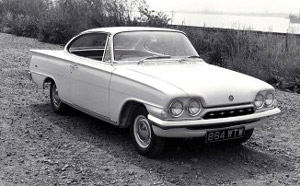
What the Capri was before the arrival of sb. that had a vision in design. John Fallis worked in the UK
on this Saxon called project.
Picture Ford Media Design studies as of 1961
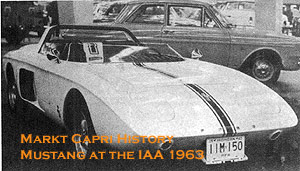
The Mustang I was shown at the IAA in Frankfurt/Germany in 1963 as a teaser
and eyecatcher. It was actually driven around Europe as a promotion of Fords
new sportscar direction. Asked about its future Ford Germanys Chief designer
Hans Muth said it would be too expensive for a serial production. (Source Markt 4/1987 Capri History article)
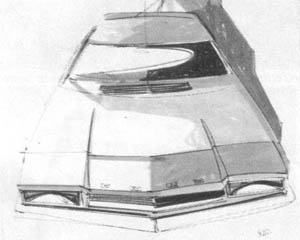
Don Creed is taking the credit for having
sketched ths design
Picture Archive Matthias Neumann/Capri club
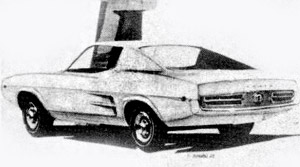
One of the other "american designs"
Picture Archive Matthias Neumann/Capri club
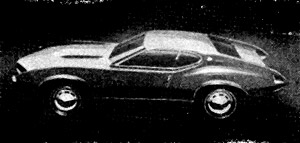
Another visionary concept car - a rendering
produced in the UK
Picture Archive Matthias Neumann/Capri club
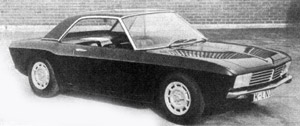
One of the competing car from Ford Cologne
- the Ford Special concept car (1964), finally killed in favour of an "american
idea"
Picture Archive Matthias Neumann/Capri club
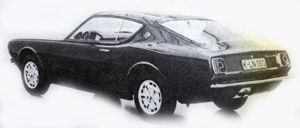
The Taunus GT from Ford Cologne was finally killed.
Pics courtesy Markt 1984/archived by Matthias Neumann
We are soon diving into more details about the
accurate timeline and Phils design.
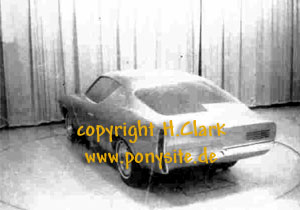
Another of Phils Capri clay models showed two different styling ideas for
the roofline and rear. Look at the right side and think forward a few years
in Ford design history. Have you seen this on other Fords coming after the
Mustang? You'll be the judge.
Don Creed takes the credit for this design below, but we are in touch with a few from this group to find out more
about Phils influence. As of 2024 we found new documents, designs and sketches in his inherited piles of stuff.
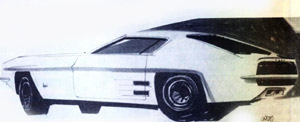
Picture Archive Matthias Neumann/Capri club
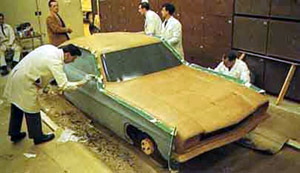
The Capri being modelled in clay
Picture Archive Matthias Neumann/Capri club
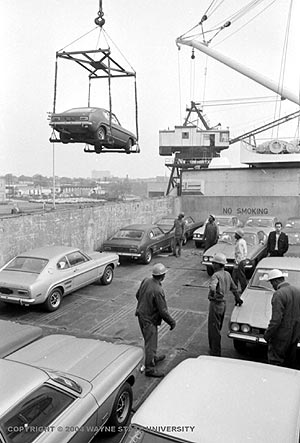
Capris arriving in the US after being shipped
from Europe.
Coypright Wayne University 2004
|
Phil Clark's career did not end with his
jobs on the Mustang I and his work in the Lincoln-Mercury Studio, there is
much more that he influenced in the automotive world of Ford, when he went to
England
Those that have followed
the case up to now, might be surprised to read more about the further influence
of Phil Clark during his stay in Europe. Paging through
his notebooks brought up even more interesting facts
about this talented Ponymaker, Mustang I designer and Mustang name creator
- his possible influence on the Ford Europe and Capri Design and even later Mustangs?
Though Don Creed is given the credit in other web sources, we found a number of period GBX design variations in Phil Clarks remaining piles in 2024.
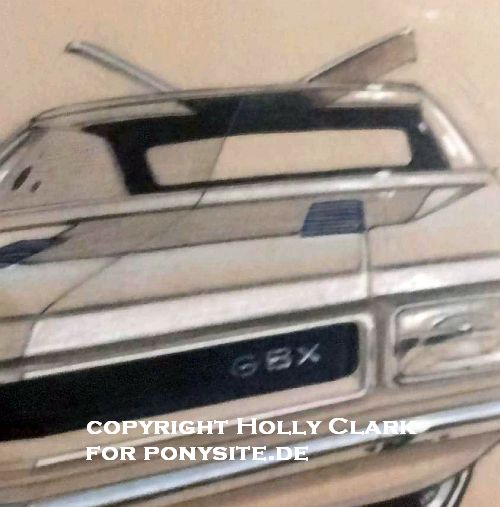
As we learned Phil Clark left the Lincoln-Mercury Design Studio at Ford Motor
Company in February 1964 to start work
at the Ford UK Essex based Design Center for Europe.
John Fallis came over to the US to offer Phil a job.
Phil worked
as Head of Design with 4 stylists and 14 modellers supervising mainly the Anglia
and Cortina projects and had obviously a dominant role in the first ever real
VAN - the Transit Camper van.
One of the stylists working under Phil Clark was Fritz Mayhew. Phil Clark was also linked up with
Designer Hans A. Muth at Ford
Cologne/Germany for close cooperation.
Fritz Mayhew later went back to the US to become Head of North America Design and directed the
development of the Ford Mustang II (Design project started in 1968 based on the
european (and LM) Capri design in 1968. The final Mustang II actually was
finished by Dick
Nesbitt ).
Designer Hans
A. Muth went - after having been at Ford Cologne for a certain time - to Ford in the U.S. When he
came back, he brought a Mustang with him. "I had quite some trouble to park
it on my Chief Designer parking place near the Studios in Cologne" Hans
told us.
Hans A. Muth is not an unknown designer in the Design world today. He has become famous for his later Suzuki Katana GSX-R and in the 90ies for
his famous Mazda MX5 (Miata). Diving into this network of 1965-1968 friendships
and colleague relations reveals some interesting
history bits. The Ford UK Design center was closely knitted to Ford
Cologne and intially the transatlantic influence a much desired flavour to be
added.
Some of the Ford Cologne designers worked in the UK center as well for a
time period - there are several congratulations mentioned in Phils notes - being
done on Phils job.
Obviously he was able to develop a car at Ford UK completely
on his own! Similar letters talk about the concept car
from Ford UK called Ford GBX or Colt. Now what does this Ford GBX look like in
mid 1965.
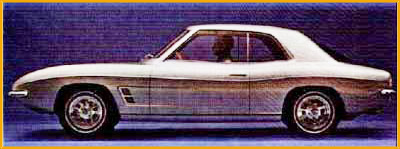
Early Ford GBX Colt Hardtop variation 1965
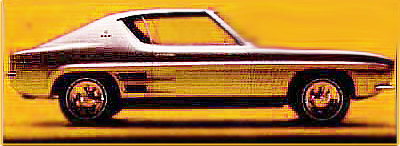
Ford GBX Colt Fastback approved July 14th.
1965
for further development by Uwe Bahnsen, who is today still consultant to Ford
Europe.
The Ford GBX Colt
Fastback ultimately led -
with only minor changes in the rear window area to the Ford Capri - the European
Mustang - sold in millions in Europe, introduced in 1968 to the market.
We were still investigating the background about Phils involvement in the
making of the Capri. Holly digged deep in the treasures and transferred these
pics to us that carry a note of "Phils model" on them.
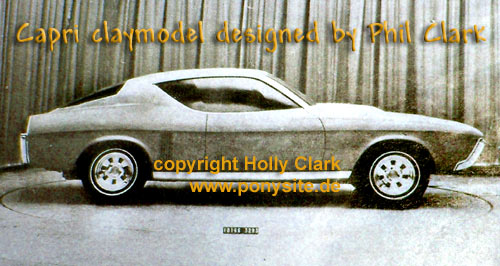
Phil was obviously fighting hard for his Capri designs, presented to
the decision makers already in late 64 or early 1965. All Ford Europe history books mention the
controversial viewpoints on several design issues and the final merging of Ford
UK and Ford Germany in the "Red Cap" program..
Phil
wrote in his notes already about a jellybean design - at this time ! - a
phrase that was put on the wall later in the US again. Remember that became a design direction for the Mustang II at a much
later stage. At this time when Phil brought it up they simply could not be done by engineering.
If you don't believe that look again at the Dick Nesbitt site and look there into the gallery to find a
similar GBX based design in the upper right corner of early concept pics with the same shape of rear side
window.
There seems to be a very logical sequence, wait for the facts in
Hollys books to come. We are still researching the accurate story with the help
of some colleagues from the UK Design studios.
More details, background stories, designs, plus photos out of Phils boxes from his
daughter Holly in the near future.
Make sure you revisit this site, since we'll keep you updated on Hollies
research.
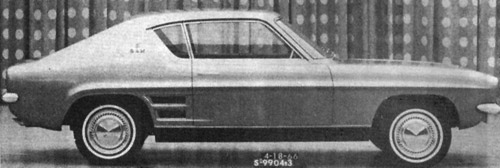
The Ford GBX prototype as of April, 18th., 1966 Picture Archive
Matthias Neumann/Capri club
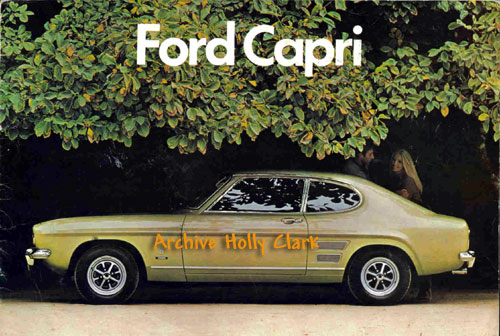
The final Ford Capri, sold in millions. Phil Clark was right there at the
heartbeat with a more advanced development.
As of September 6th.,
2010 Phil Clark was inducted into the Ford Capri Hall of Fame from the Ford
Capri North America Club.
Ford
Stylist & Designer Phil Clark Inducted Into Hall Of Fame
Phil Clark, born in Iowa
and raised in Nashville TN, was the chief exterior stylist of the European
Ford Capri Mk1, 1969-1974.
Code-named GBX, his
drawings and clay models for Project "Colt", the name given to Capri
preproduction planning within Ford, range from 1964 through 1966. Early Clark
renderings show nearly all the classical Capri hallmarks: Long hood, Short
rear deck, Fastback pillars with notchback rear window, Squared-off rear
quarter, Upswept front valence, Dramatic side crease, etc.
Clark graduated from the
Pasadena CA Art Center College Of Design in 1958. He worked at GM immediately
afterwards, until 1962 when he went to Ford in Dearborn working for the
legendary chief Gene Bordinat. There he worked as a stylist for
Lincoln-Mercury in the Design Center. He was involved in the Mustang I concept
car of 1962, and created the iconic "Galloping Horse" Mustang logo
used on the concept and production Mustangs ever since.
In February 1964, Clark was
transferred to Ford of England's Research & Engineering Center in Essex,
working for John Fallis and Roy Haynes in Design, and Stan Gillen, the
American CEO of Ford of Britain. There, Clark worked on many other projects in
exterior design such as the Ford Transit and the Zodiac-Zephyr. He also
contributed to designs coming out of the Merkenich studios of Ford of Germany,
run by Uwe Bahnsen, and later Hans Muth.
Clark died in 1968 at age 32 of
kidney failure. His daughter Holly Clark, two years old at the time of his
death, has since reconstructed much of Phil Clark's career from his surviving
art folios, Ford Motor Company research (courtesy of Bill Ford, J Mays, and
Jack Telnack), and Clark's former work associates at Ford.
Contact: Norm Murdock,
Executive, Ford Capri Hall Of Fame, blitz@teamblitz.com
|
















